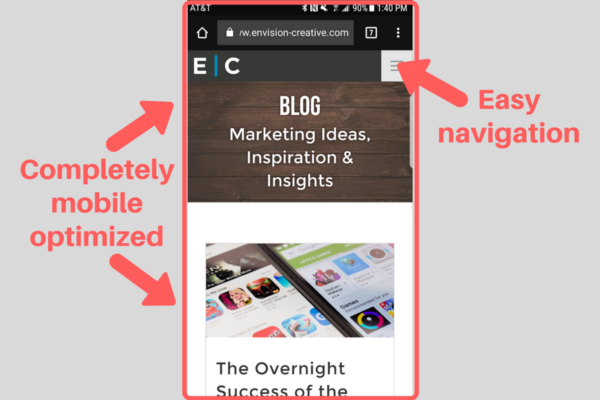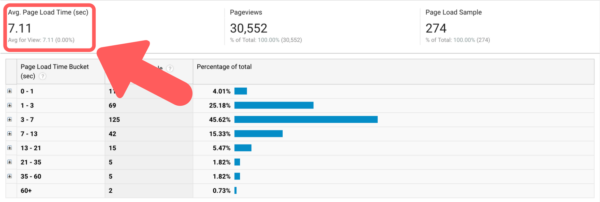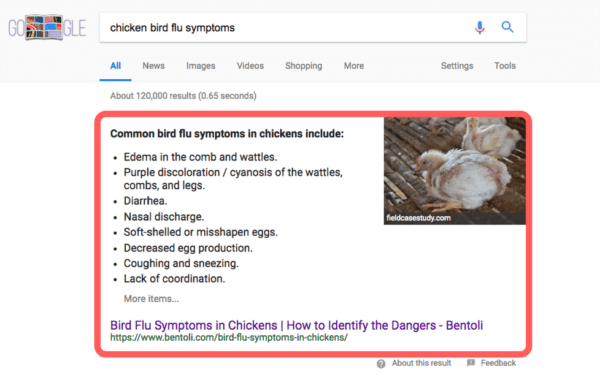What’s that old familiar saying? Change is inevitable? When it comes to SEO ranking factors and algorithm adjustments, that’s absolutely true.
SEO ranking dynamics change all the time. If you’re not constantly checking for the latest news you quickly get left behind and your search engine ranking begins to suffer. But don’t worry—at the end of this post is a checklist that will tell you if your site fulfills the most important SEO requirements or needs some work.
So, what are the best ways to optimize your website for favorable search engine rankings? That’s what we’re going to explore in this post. But first, taking a look at the history of SEO will set the stage for how ranking factors could change in the future.
The Evolution of Search Engine Optimization Ranking
The sheer volume of search engine algorithm changes that have occurred since 2000 is a bit overwhelming. Moz keeps a list of every Google algorithm change that’s so long your fingers might cramp from scrolling.
Knowing how ranking factors have changed over the years is a good way to predict and prepare for the direction that changes will take in the future.
There are 5 main aspects of SEO ranking history:
1. Keyword Stuffing
On-page content, domain names, directory mentions, and basic site structure were the foundational factors for early SEO ranking. Unfortunately, people quickly figured out that stuffing websites with keywords would allow them to achieve a favorable ranking.
2. Single Keywords
In 2003, Google introduced the “Florida” algorithm update, which penalized websites using spam tactics—like keyword stuffing. No more hidden links, invisible text, or duplicate sites. This was the first ever major search engine algorithm, and it revolutionized the way sites optimized for ranking. Namely, people began optimizing content for one focus keyword to improve their ranking.
3. Keyword Phrases
2008 was a breakout year for SEO as the focus turned towards improving the experience for users. Thanks to the release of Google Suggest, sites began to optimize their content for people rather than search engines. The use of single keywords evolved into keyword phrases that more accurately depicted the intent of users’ search queries.
4. Content is King
Content is anything that delivers information on your website, including blog posts, web copy, case studies, landing pages, infographics, and much more. After Google’s release of Panda 1.0 and Penguin 1.0 in 2011 and 2012, inbound marketing started to gain a foothold and content became the star of SEO ranking. Keyword phrases were still relevant, but there was a noticeable shift towards the inclusion of multimedia, legitimate backlinking tactics, and white hat SEO practices.
5. Voice, Visual, and Mobile
Modern search engine optimization ranking is all about catering to the user experience (UX). It’s been a few years now since mobile usage overtook desktop usage. Understandably, mobile optimization has become one of the most important Google ranking factors. Now, visual and voice search is showing massive potential.
What does this timeline of changes tell us?
UX is at the forefront of modern SEO.
Combine best practices with an understanding of search intent and you’ll be able to execute an extraordinary SEO ranking strategy.
Check out these 15 Essential SEO Best Practices
How to Optimize Your Website for Favorable Ranking
Now we’ve come to the meat of the matter.
Why do you want to improve your search engine ranking? Is it to earn greater reach, get more traffic, or increase brand exposure?
Sure. All these things are awesome, but what’s more important to most businesses is attracting qualified prospects who can become qualified leads and eventually turn into paying customers.
SEO that doesn’t support your business goals isn’t doing much good.
The #1 Way to Improve Your SEO Ranking
Here’s the deal:
Knocking SEO ranking out of the park means putting the focus on UX.
People visit websites to fulfill a need. It might be as simple as learning about the latest Pinterest update, or it could be as involved as calculating their lead generation potential. Whatever it is your visitors want, it’s your job to make it as convenient and helpful a process as possible.
Focusing on the UX requires optimizing your site for as many SEO ranking elements as possible.
Here are 6 of the most important Google ranking factors:
- Mobile-first indexing
- Site speed and accelerated mobile pages (AMP)
- Featured snippets
- Relevant backlinks
- Clear navigation
- Voice and visual search
Let’s take a closer look at each element and the ways you can improve performance.
1. Mobile-first indexing
The mobile version of your website is now considered the primary version of your website. Google is moving towards crawling sites with a mobile-first approach. Sites without a mobile version or mobile optimization could be penalized once this feature rolls out in full force.

Here’s how to ensure you’re taking a mobile-first approach to SEO:
- First of all, you need to have either a mobile version of your website or a mobile optimized site. There’s no if, ands, or buts about it.
- If you have a separate mobile site, make sure all your content from the desktop version is also on the mobile version in the correct formats. Quality of content is essential.
- Make sitemap links available on the mobile version of your website.
- Use the same structured data markup on both versions.
- Use metadata that corresponds to both the mobile and desktop version.
- Verify the mobile version of your site with Google Search Console.
That’s a lot of elements to optimize. But here’s the good news:
Mobile-first indexing won’t have an immediate effect on ranking.
In other words, you have some time to optimize these elements. Don’t wait around too long though. The earlier you start getting ready for mobile-first indexing, the better off your site’s performance will be.
2. Site Speed and accelerated mobile pages (AMP)
You might be wondering:
What is AMP?
It’s a project started by Google and Twitter that’s designed to create faster mobile pages. They’re basically a slimmed down HTML version of your site pages that decreases the loading time significantly.
Web page load time is a huge SEO ranking factor and with mobile-first indexing taking precedence over desktop, AMPs are becoming major players.
Page loading speed may be even more important than you realize. For example, 53% of mobile visitors will abandon a website if a page takes more than 3 seconds to load.
The website in the example below is pulling an average page load time of 7.11 seconds. That’s well over the recommended 3 second threshold, meaning they’re losing a lot of traffic and their ranking is not as high as it could be:

So, how can you optimize for AMP?
Start using the AMP plugin and then figure out which pages and content on your site should be prioritized.
3. Featured snippets
Featured snippets are shown at the top of Google search results, above the highest ranked organic results. According to Google, “this featured snippet block includes a summary of the answer, extracted from a webpage, plus a link to the page, the page title and URL.”
Here’s the bad news:
To be featured in a snippet, your page must be ranked in the top 10 search results.
That means you have to create an ultimate resource that can be displayed in the form of either a paragraph, list, or table. Check out the list example below:

Being featured in a snippet is notoriously hard, but not impossible. Just focus on creating high-quality, in-depth content that’s superior to every other piece of content covering the same subject.
4. Relevant backlinks
Nothing says authority to search engines quite like a great backlink. Every time a website links to your site, Google reviews the score of that link and the relevance of the link’s anchor text. Links with strong scores and high relevance tell the search engine your content is high-quality and could be in line for a bump in ranking.
The best way to optimize your backlinking strategy for a strong SEO ranking is to acquire high-quality links from respected, authoritative websites. If you own a small business, try your hand at guest posting for Entrepreneur, Business Insider, or your local business journal.
The most important thing to remember is that you only want backlinks from sites with good authority that are relevant to your business.
5. Clear navigation
Don’t make your site visitors work to find what they’re looking for.
People want easy, fast, streamlined access to the answers they’re looking for. It’s your job to build a user-friendly navigation into your website. The easier it is for people to get around, the longer they’ll stay on your site and the better experience they’ll have.
Believe it or not, this makes a big impression on SEO ranking because a site with clear navigation is:
- Easy for search engines to crawl and index
- Designed with the user in mind
- Effective at improving bounce rates, page dwell time, and click-through rates
What’s the bottom line?
Make your site flexible enough that you can adjust the navigation to enhance the UX.
6. Voice and visual search
Voice and visual search have been the talk of the town since the last part of 2017. Voice search probably more so than visual—we can thank Google, Siri, Cortana, and Alexa for that.
Some experts predict that 50% of all searches will be voice-based by 2020.
Optimizing for voice search means optimizing for human language and not machine language. When people conduct a voice search they simply ask a question like they would in a face-to-face conversation. They don’t say, “best new cars.” They say, “what are the best new cars of 2018?”
Build context into every piece of content on your website. The more relevant you can make your website, the more likely it is that your content will be shown in voice search results.
Now, on to visual search.
Visual search makes up approximately 27% of all searches. It’s not just about searching for visual information anymore, it’s about searching with visual information.
Picture this:
You’re walking through Times Square and see an ad for a pair of shoes you have to own. You raise your phone, snap a picture, and voila! The exact same shoe is pulled up in your search results and you can instantly purchase it, add it to Pinterest, or share it on Facebook.
The best way to optimize for visual search is to implement Schema Markup on your website. This will create “an enhanced description (commonly known as a rich snippet), which appears in search results.”
Problem solved. At least until the next wave of algorithm changes set in.
Create a UX that Predicts User Intent
Everything that’s been said so far boils down to this one important fact:
It’s better to optimize for the user than for the search engine.
It may sound counterintuitive but think of it this way: search engines—led by Google—are focused on improving the UX. They want to deliver search results that are as accurate as possible so people continue to rely on them as their main source of information.
Optimizing for UX will help you get closer and closer to becoming the best result possible from a human experience standpoint.
Just remember to implement a UX friendly design on your website that incorporates:
- Great structure
- Usable design
- Easy access to information
- Fast loading times
- Relevant content
And one more thing.
Don’t forget about the role of social media in SEO ranking.
While social doesn’t have a great effect on ranking factor, Google does consider shared links as a ranking signal. Your online presence needs to be strong from top to bottom.
Here’s the final word:
Providing an experience that matches the intent of user search queries will naturally lead to crushing the SEO ranking game when you keep best practices in mind.
Actionable SEO Checklist:
Fill in the checklist below to see if your site is living up to its SEO ranking potential:
[icon name=”square-o” class=”” unprefixed_class=””] My content has a keyword phrase that’s supported by relevant variations
[icon name=”square-o” class=”” unprefixed_class=””] My site is mobile optimized
[icon name=”square-o” class=”” unprefixed_class=””] My average load time is 3 seconds or less
[icon name=”square-o” class=”” unprefixed_class=””] My content is relevant, and high-quality
[icon name=”square-o” class=”” unprefixed_class=””] My backlinks come from reputable sites
[icon name=”square-o” class=”” unprefixed_class=””] My site navigation is simple and intuitive
[icon name=”square-o” class=”” unprefixed_class=””] My average bounce rate is lower than 60%
-FINAL(01-00)-White&Blue-01.svg)





